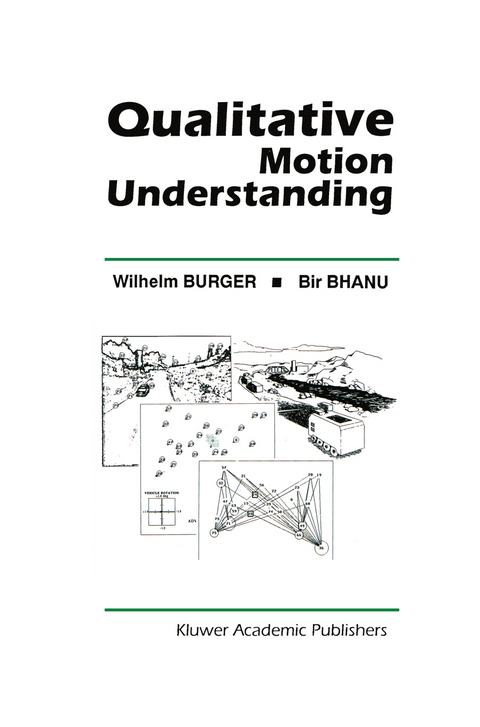
Qualitative Motion Understanding
Springer-Verlag New York Inc.
978-1-4613-6584-6 (ISBN)
Qualitative Motion Understanding describes a qualitative approach to dynamic scene and motion analysis, called DRIVE (Dynamic Reasoning from Integrated Visual Evidence). The DRIVE system addresses the problems of (a) estimating the robot's egomotion, (b) reconstructing the observed 3-D scene structure; and (c) evaluating the motion of individual objects from a sequence of monocular images. The approach is based on the FOE (focus of expansion) concept, but it takes a somewhat unconventional route. The DRIVE system uses a qualitative scene model and a fuzzy focus of expansion to estimate robot motion from visual cues, to detect and track moving objects, and to construct and maintain a global dynamic reference model.
1 Introduction.- 1.1 Aims of Motion Understanding.- 1.2 Autonomous Land Vehicle Navigation.- 1.3 Multi-Level Vision and Motion Analysis.- 1.4 Approaches to Motion Understanding.- 1.5 Outline of this Book.- 2 Framework for Qualitative Motion Understanding.- 2.1 Moving Through a Changing Environment.- 2.2 The “DRIVE” Approach.- 2.3 Low-Level Motion.- 2.4 Camera Motion and Scene Structure.- 2.5 Detecting 3-D Motion.- 2.6 Qualitative Modeling and Reasoning.- 3 Eli ECTS OF CAMERA MOTION.- 3.1 Viewing Geometry.- 3.2 Effects of Camera Rotation.- 3.3 Computing the Camera Rotation Angles.- 3.4 Effects of Camera Translation.- 3.5 Computing the Translation Parameters.- 4 Decomposing Image Motion.- 4.1 Motion Between Successive Frames.- 4.2 FOE from Rotations.- 4.3 Rotations from FOE.- 5 THE FUZZY FOE.- 5.1 Avoiding Unrealistic Precision.- 5.2 Defining the Fuzzy FOE.- 5.3 Computing the Fuzzy FOE.- 5.4 Experiments.- 6 Reasoning about Structure and Motion.- 6.1 Abstracting Image Events.- 6.2 Interpreting Image Events.- 6.3 Reasoning About 3-D Scene Structure.- 6.4 Reasoning About 3-D Motion.- 7 The Qualitative Scene Model.- 7.1 Basic Elements of the Model.- 7.2 Representing Multiple Interpretations.- 7.3 Conflict Resolution.- 7.4 Dynamic Evolution of the QSM.- 8 EXAMPLES.- 8.1 Simulated Data.- 8.2 Real Data.- 8.3 Implementation Issues.- 9 SUMMARY.- A.1 Geometric Constraint Method for Camera Motion.- A.2 Estimating Absolute Velocity.- REFERENCES.
| Erscheint lt. Verlag | 8.10.2012 |
|---|---|
| Reihe/Serie | The Springer International Series in Engineering and Computer Science ; 184 |
| Zusatzinfo | XIII, 210 p. |
| Verlagsort | New York, NY |
| Sprache | englisch |
| Maße | 155 x 235 mm |
| Themenwelt | Informatik ► Grafik / Design ► Digitale Bildverarbeitung |
| Informatik ► Theorie / Studium ► Künstliche Intelligenz / Robotik | |
| Technik ► Elektrotechnik / Energietechnik | |
| ISBN-10 | 1-4613-6584-8 / 1461365848 |
| ISBN-13 | 978-1-4613-6584-6 / 9781461365846 |
| Zustand | Neuware |
| Informationen gemäß Produktsicherheitsverordnung (GPSR) | |
| Haben Sie eine Frage zum Produkt? |
aus dem Bereich


